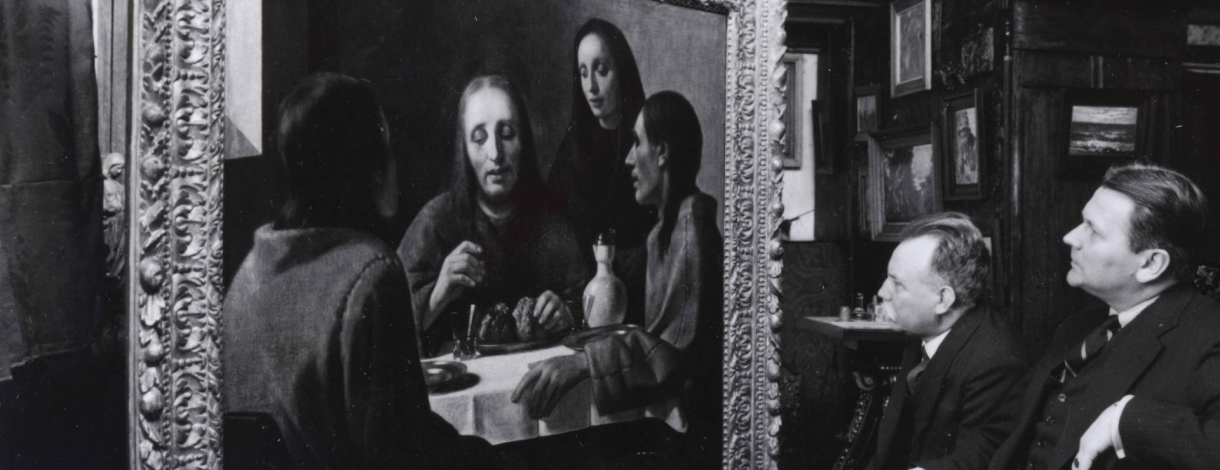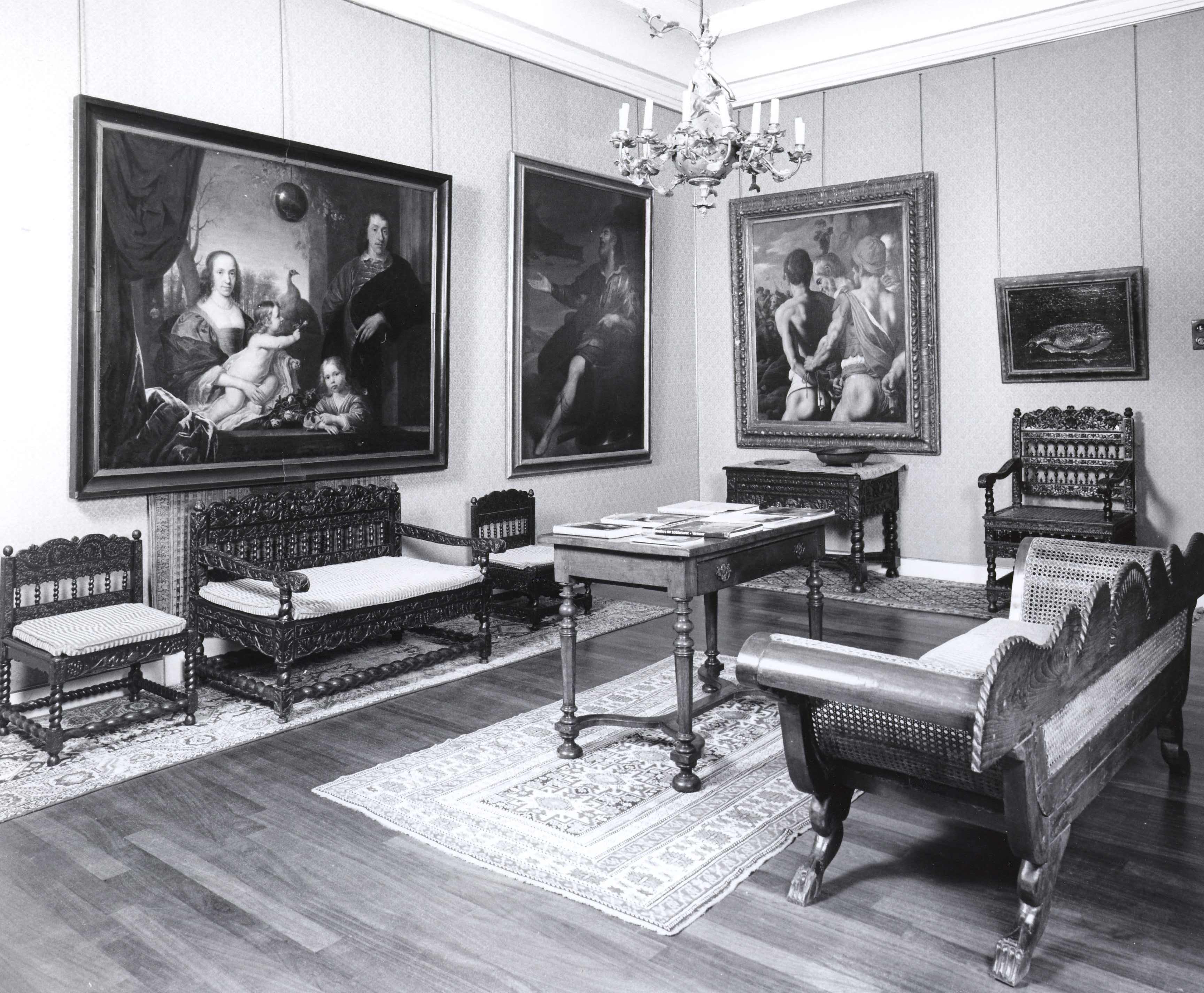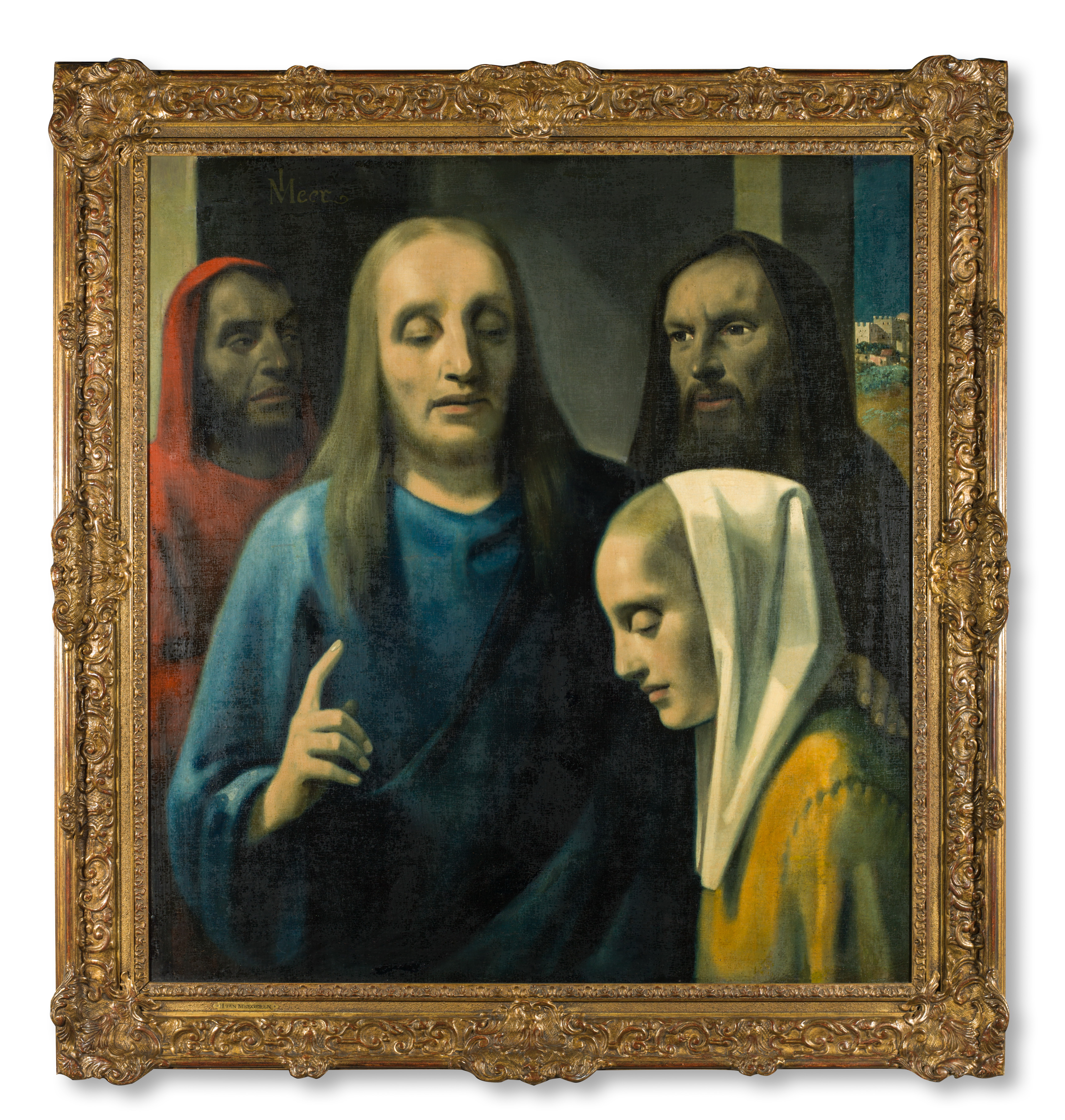

- From: 18 march 2023
- Through: 11 june 2023
- Location: Kasteel Het Nijenhuis
Looking for Vermeer
In 1972 Dirk Hannema, founder Museum de Fundatie, published a pamphlet entitled Over Johannes Vermeer van Delft, twee onbekende jeugdwerken en een andere visie op zijn oeuvre (‘About Johannes Vermeer: two unknown early works and a different perspective on his oeuvre’), in which he attributed six works from his private collection with absolute certainty to Vermeer. Those attributions were not taken seriously by all at the time, and have now been comprehensively rejected. Yet Hannema was completely convinced of his own connoisseurship, and spent most of his adult life seeking Vermeers. This exhibition will tell the story of that search.

Photo: Dirk Hannema's Vermeer Room at Kasteel het Nijenhuis.
To understand Hannema’s obsession with Vermeer we need to go back to the interwar period. In 1921, at the age of 26, Hannema was appointed director of Museum Boymans (now Boijmans Van Beuningen) in Rotterdam. After the opening of its new premises in 1935 the museum evolved, under Hannema’s leadership, into a museum of international standing. Hannema staged a major Vermeer exhibition to celebrate the opening of the new Boymans. It was a great success, one of the first blockbuster exhibitions in the Netherlands. Looking for Vermeer features a number of works by followers of Vermeer that were also shown at Boymans in 1935.
Hannema’s Vermeer exhibition was entirely in keeping with the spirit of the times. In the 1930s, like today, there was unprecedented interest in Vermeer. The art world suspected that there must be more works by the 17th-century master, particularly from his assumed early Italian period. Suddenly, a whole series of Vermeers reminiscent of Italian painter Caravaggio (1571–1610) came to light, confirming these suspicions. One of the new ‘Vermeer’ masterpieces was The Disciples at Emmaus, which Dirk Hannema acquired for Boymans, beating both the Rijksmuseum and the Mauritshuis to it.

Han van Meegeren, Christ and the Adulteress, 1942, oil on canvas, 100 x 90 cm, Museum de Fundatie (long-term loan from the National Cultural Heritage Agency) Zwolle, Heino / Wijhe
After the Second World War, however, it was found that The Disciples at Emmaus was not by Vermeer at all, but had been painted by the artist and forger Han van Meegeren (1889–1947). The key work that played a role this discovery, Christ and the Adulteress, will be included in the exhibition. Shortly after the war an American captain found this painting, which had also been attributed to Vermeer, in the art collection of Hitler’s righthand man Hermann Göring. Research into the provenance of Christ and the Adulteress led straight to Han van Meegeren, who in his subsequent trial confessed to having painted it. Van Meegeren managed to convince the court that he had not been a collaborator, but a hero who had fooled Göring. Even after Van Meegeren produced a painting live in court as evidence, for many years Hannema remained convinced that The Disciples at Emmaus really had been painted by Vermeer.
The forgeries continued to plague Hannema, overshadowing the earlier success of his Vermeer show in 1935. Later, Hannema attributed at least seven works from his private collection to Vermeer. These paintings were not forgeries, but nor were they Vermeers. They too will feature in Looking for Vermeer.
Header: Abraham Bredius and Dirk Hannema at the Emmaüsgangers
- From: 18 Mar 2023
- Through: 11 Jun 2023
- Location: Kasteel Het Nijenhuis
Also check these exhibitions
-
JONATHAN VAN DOORNUM
.png)
Dark There, Joyful Here
Museum de Fundatie -
Sculpture garden
.png)
near Kasteel het Nijenhuis
Kasteel Het Nijenhuis -
Fundatie Collection: REMIX
.png)
-
Fundatie Collection: REMIX
.png)
New perspectives in the castle
Kasteel Het Nijenhuis -
PROTO: Jack Brandsma & Hester Oerlemans & students
.jpg)
(RE)DO
Kasteel Het Nijenhuis -
Fundatie Collectie: 80 years of freedom
.png)
-
Henk Heideveld
.jpg)
50 Years of Artistry
Museum de Fundatie -
Dutch impressionism
.png)
from Israels to Ansingh
Museum de Fundatie
.jpg)
.jpg)